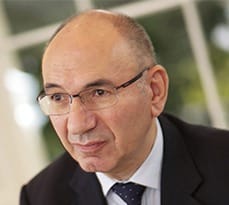Following high returns in the 1980s and 1990s, real equity returns have since been below historical averages despite pandemic recovery, says Credit Suisse Yearbook.

Investors benefited from high returns in the 1980s and 1990s, but since then real equity returns have been below their historical averages despite a strong recovery after 2009 and successful weathering of the pandemic storm, says the Credit Suisse Global Investment Returns Yearbook 2021, co-authored by Professor Elroy Dimson of Cambridge Judge Business School and Professor Paul Marsh and Dr Mike Staunton of London Business School.
“Three bear markets in just two decades have provided a timely reminder of the considerable risk involved in equity investment,” says a summary of the Yearbook published by the Credit Suisse Research Institute.
Here is a summary of some of the Yearbook’s findings:
Long-term perspectives favor equity investors
- The stock market crash triggered by the spread of COVID-19 (coronavirus) was the most rapid in history, apart from the October 1987 Crash. The market fell 35% in just 23 trading days. Recovery, however, in the US and many other markets was exceptionally swift fueled by massive fiscal and monetary stimulus; then later in the year, markets were driven higher by news of vaccines.
- Equities still remain the best long-run financial investment ahead of bonds and bills. Over the last 121 years, global equities have provided an annualised real USD return of 5.3% versus 2.1% for bonds and 0.8% for bills.
- Prospectively, the authors estimate that the equity risk premium will be around 3.5%, a little lower than the historical figure of 4.4%, but still implying that equity investors can expect to double their money relative to short-term government bills in 20 years, despite the low real interest rate environment.
- While all markets were exposed to COVID-19, a number of emerging markets (EMs) were fast to get the virus under control, including China, South Korea and Taiwan (Chinese Taipei), which together represent about two-thirds of the overall value of EMs.
- Investors benefited from high returns in the 1980s and 1990s. Since then, real equity returns have been below their historical averages, despite the strong recovery since 2009 and the successful weathering of the pandemic storm. Three bear markets in just two decades have provided a timely reminder of the considerable risk involved in equity investment.
- In the second decade since the turn of the millennium, investors were fortunate; markets recovered quickly from the global financial crisis, which was followed by more than a decade of strong returns. They then recovered even faster from the initial pandemic collapse.
Relevance of emerging countries for global markets is increasing
- As recently as 20 years ago, EMs made up less than 3% of world equity market capitalisation and 24% of GDP. Today, they comprise 14% of the free-float investable universe of world equities and 43% of GDP.
- China is the largest EM. Its weight in the EM indexes has grown rapidly from just 3% in the early 2000s to 39% today. With the gradual inclusion of A-shares, the country’s weighting is expected to grow further. Yet despite China’s unprecedented economic growth, the annualised return from its stock market has been almost the same as developed markets (DMs).
- Investors should not be deterred from investing in EMs because of risk. The risk of individual EMs has fallen dramatically over the last 20 years, while the gap between the average risk of EMs versus DMs has also fallen. Despite this, EMs still offer important diversification benefits to investors.
Watch a video interview where Elroy discuss the Yearbook with Andrew Milligan of the Society of Professional Economists (SPE):


